Ecosystems, Food Chains, and Food Webs
An ecosystem is a community of living organisms in conjunction with the nonliving components of their environment, interacting as a system. This includes plants, animals, microorganisms, soil, rocks, minerals, water sources, and the local atmosphere. Ecosystems can be as large as a forest or as small as a pond.
Food Chains
A food chain is a linear sequence of organisms through which nutrients and energy pass as one organism eats another. It starts with the primary producer, usually a green plant, which is eaten by an herbivore, and then that herbivore is eaten by a carnivore. For example, a simple food chain in a forest ecosystem could be: grass (producer) → rabbit (primary consumer) → fox (secondary consumer).
Food Webs
A food web is a more complex, interconnected network of many different food chains within an ecosystem. It shows the feeding relationships between various organisms in an ecosystem and the transfer of energy through these relationships. In a food web, organisms can have multiple feeding relationships and are not limited to being a part of just one linear chain. For example, in a forest ecosystem, a food web could show how plants are eaten by rabbits, which are then eaten by foxes, and how foxes might also eat birds, insects, or other small mammals.
Study Guide
- Define what an ecosystem is and give examples of different types of ecosystems.
- Explain the concept of a food chain and provide a real-world example of a simple food chain in an ecosystem.
- Describe the differences between a food chain and a food web, and give an example of a food web in a specific ecosystem.
- Discuss the role of producers, consumers, and decomposers in an ecosystem and how they are interconnected through food chains and food webs.
- Explain the flow of energy through an ecosystem and how it is represented in food chains and food webs.
- Identify and explain the concept of trophic levels within a food chain or food web.
- Discuss the impact of human activities on ecosystems and the potential effects on food chains and food webs.
Understanding ecosystems, food chains, and food webs is crucial for understanding the interdependence of living organisms and their environment. It also provides insight into the flow of energy and nutrients through ecosystems, which is essential for maintaining the balance of nature.
By studying and comprehending these concepts, we can gain a deeper understanding of the delicate balance within ecosystems and the potential consequences of human actions on these complex and interconnected systems.
.◂Science Worksheets and Study Guides Seventh Grade. Ecosystems, food chains and food webs
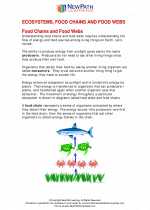
 Activity Lesson
Activity Lesson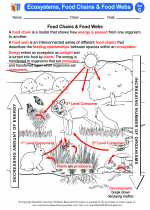
 Worksheet/Answer key
Worksheet/Answer key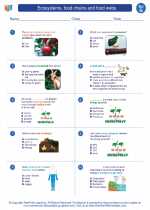
 Worksheet/Answer key
Worksheet/Answer key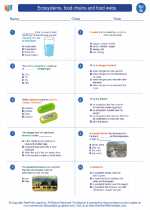
 Worksheet/Answer key
Worksheet/Answer key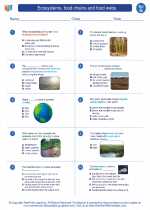
 Vocabulary/Answer key
Vocabulary/Answer key
 Vocabulary/Answer key
Vocabulary/Answer key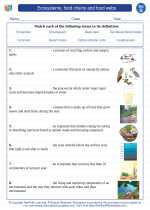
 Vocabulary/Answer key
Vocabulary/Answer key
 Vocabulary/Answer key
Vocabulary/Answer key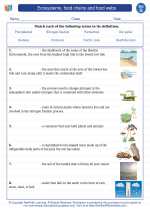
 Vocabulary/Answer key
Vocabulary/Answer key
